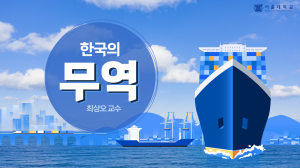Trade in Korea |
|
SummaryKorea’s economy grew rapidly after liberation. What makes Korea’s growth experience particularly interesting is that, unlike early developed countries such as the UK, the US, and France, which accumulated the prerequisites for economic development over a long period, Korea entered the world economy in the late 19th century as a typical latecomer transitioning into modernity. This course aims to explain how Korea was able to achieve such rapid economic growth from this position as a latecomer. Focusing on Korea’s foreign trade, the course divides the growth process into three main periods. The first period covers the late 19th century opening of ports and the colonial era, providing a brief overview of Korea’s foreign trade before liberation. The second, and main, period focuses on foreign trade from liberation through the era of rapid growth. Finally, the third period offers a brief look at trade developments since the 1980s. |
InstructorSang-oh Choi1. Affiliation National Museum of Korean Contemporary History 2. Education Ph.D. in Economics, Sungkyunkwan University 3. Selected Publications "The Formation Process of Export-oriented Industrialization Policy in Korea- A Study on Factors of Rapid Export Growth after the early 1960s -", The Review of Business History 25(3), 2010 "Korean Government's Economic Policy and Industrialization Strategy in the 1950s", Review of Economic History 35, 2003. |
Guidebooksweek01.pdf (1 MB)
week02.pdf (1 MB)
week03.pdf (1 MB)
week04.pdf (1 MB)
week05.pdf (1 MB)
week06.pdf (1 MB)
week07.pdf (1 MB)
week08.pdf (1 MB)
week09.pdf (1 MB)
week10.pdf (1 MB)
week11.pdf (1 MB)
week12.pdf (1 MB)
exam.pdf (231 KB)
|


